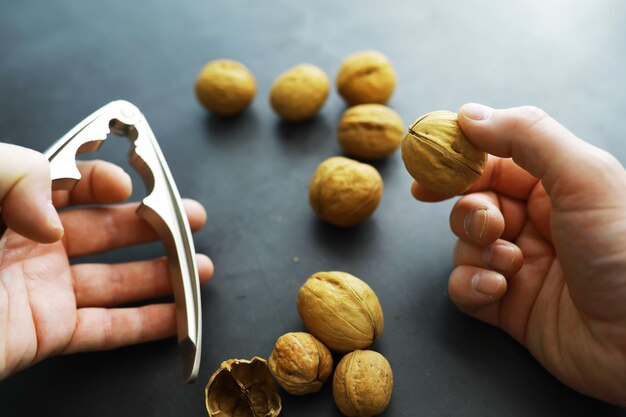Discovering the Health Benefits of Walnuts for Diabetics: A Nutritious Choice?
If you’re managing diabetes, you know how crucial it is to choose foods that support your health and well-being. Navigating the do's and don’ts of dietary choices can be challenging. While it’s easy to focus solely on what to avoid, it’s equally important to celebrate foods that can positively impact your health. Among the many options available, you may wonder, are walnuts good for diabetics? Let’s dive deep into this topic to explore the potential benefits of walnuts for individuals with diabetes, while providing a comprehensive guide on incorporating them into your diet.
🥜 What Makes Walnuts Unique?
Before diving into their benefits for diabetics, it's important to understand what sets walnuts apart. Walnuts are rich in nutrients, including healthy fats, protein, and various vitamins and minerals. They are particularly notable for their high content of omega-3 fatty acids, which are more commonly found in fish. This makes walnuts a valuable plant-based source of these essential fats, which play a profound role in heart health and inflammation reduction.
🤔 Why Consider Walnuts in a Diabetic Diet?
There are several reasons why walnuts could play a beneficial role in a diabetic-friendly diet:
1. Richness in Healthy Fats
Walnuts are high in polyunsaturated fats, notably omega-3 fatty acids. These fats are known for their heart-healthy properties, which can be particularly beneficial for diabetics who are at a higher risk of heart disease.
2. Supporting Blood Sugar Control
While nuts in general have a low glycemic index, walnuts, in particular, contain compounds that may help regulate blood sugar levels. Incorporating walnuts into your diet can potentially aid in stabilizing glucose levels, thanks to their fiber and protein content which slow down the absorption of sugar.
3. Source of Antioxidants
Walnuts boast a high level of antioxidants, including compounds like ellagic acid and tocopherols. These antioxidants play a crucial role in combating oxidative stress, a factor that can exacerbate diabetes-related complications.
4. Promoting Heart Health
The omega-3 fatty acids, particularly alpha-linolenic acid (ALA), found in walnuts not only support heart health but may help reduce inflammation, lower blood pressure, and improve lipid profiles. Given that heart disease is a prevalent concern for diabetics, incorporating heart-healthy foods like walnuts can be vital.
5. Appetite Management
Walnuts can be satiating due to their fat and protein content, potentially helping in weight management, which is a key component of managing type 2 diabetes. Feeling full for longer can prevent overeating and aid in maintaining a healthy weight.
How to Incorporate Walnuts into Your Diet
So, how can you seamlessly incorporate walnuts into your daily meals? Here are a few practical tips:
🥗 Add to Salads
Sprinkle a handful of walnuts over your favorite salad for a crunchy texture and nutritious boost.
🍲 Enhance Your Breakfast
Mix walnuts into your morning oatmeal or yogurt. They add a delicious crunch and are a great way to start the day with protein and healthy fats.
🥮 Bake into Goods
Consider adding chopped walnuts to whole-grain bread or muffin recipes. This will not only enhance the flavor but also up the nutrient factor substantially.
🥤 Blend in Smoothies
For a creamy texture and nutrient lift, add walnuts to your smoothie blend. They pair well with a variety of fruits and vegetables.
🥣 Create a Nut Mix
Prepare a homemade nut mix with walnuts, almonds, and other seeds for a portable snack that keeps you full between meals.
Important Considerations for Diabetics
While walnuts offer numerous health benefits, there are considerations diabetics should keep in mind:
Portion Control
Despite their health benefits, walnuts are calorie-dense due to their fat content. Practicing portion control is crucial to avoid excessive calorie intake. Aim for a small handful daily, which roughly equates to 1 ounce or 28 grams.
Balance in Diet
Incorporating walnuts as part of a balanced diet is essential. Ensure you’re still consuming a variety of other foods like vegetables, lean proteins, and whole grains.
Allergy Awareness
Be mindful of potential nut allergies. If you have any known allergies to tree nuts, walnuts should be avoided.
Individualized Dietary Needs
Always consider personal dietary needs and preferences. Diabetes management can vary greatly from person to person, and it’s crucial to tailor dietary choices to meet your specific health goals.
📝 Summary: Key Takeaways on Walnuts and Diabetes
Here’s a handy summary to highlight the important points discussed:
- Heart Health Boost: 🧡 Walnuts provide omega-3 fatty acids that support heart health.
- Blood Sugar Control: 🔍 May assist in stabilizing glucose levels thanks to fiber and protein.
- Antioxidant Powerhouse: 💪 Packed with antioxidants combating oxidative stress.
- Appetite Management: 😋 Aid in feeling full, promoting weight management.
- Portion Control: ⚖️ Limit to a handful a day to manage calorie intake.
A Nutty Insight: Understanding the Role of Walnuts in Diabetes Management
Walnuts emerge as a nutritious choice in the quest for a diabetes-friendly diet. Their healthy fats, fiber, and antioxidant properties make them a worthy addition to a balanced diet for those managing diabetes. Nonetheless, it’s always recommended to view them as part of a holistic approach to nutrition. As you explore different food options, considering professional dietary advice that aligns with your health needs is always beneficial.
Remember, no single food holds the key to diabetes management. Instead, it’s about crafting an overall diet that emphasizes variety, moderation, and nutrient density — of which walnuts can certainly be a part. So, as you ponder the question posed at the beginning of this article, you might confidently say yes, walnuts can be good for diabetics, provided they are consumed thoughtfully and as part of a balanced diet. 🥕
Feel empowered to use the knowledge of walnuts as just one piece of your dietetic puzzle. Embrace the flavorful versatility and potential health benefits of walnuts, and enjoy every crunchy bite knowing you're making a health-conscious choice.
